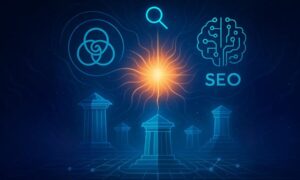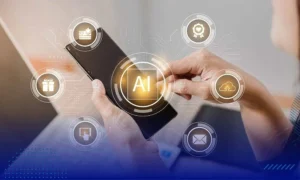By Brian Jabeck, Vice President of Data Centers at Enchanted Rock
Increased demand for AI and other new technologies is leading to explosive data center growth. By 2030, it’s expected that data centers will reach 35 gigawatts of power consumption annually, up from 17 gigawatts just last year. This growth has put new pressure on an already strained electrical grid, but thankfully, microgrids offer a unique and timely solution. With the help of renewable natural gas, not only can they offset grid pressure, but they can redistribute power, creating energy hubs that are secure and resilient.
Managing a Grid-Stressed Environment to Advance Innovation
While our communities and businesses are rapidly digitizing, data centers play a critical role in driving the energy transition, largely due to how they are powered and where they are operating.
Historically, most data centers have run on diesel generators, but as demand has increased, the push to advance thoughtful energy design to lower carbon output has put data centers at the forefront of clean energy innovation. And because many data centers are increasing in size, they are seeking new solutions to run autonomously, when necessary, to not put pressure on local infrastructure.
Many communities are facing both data center growth paired with poor grid infrastructure, but this presents opportunities to create new solutions that benefit all parties. A prime example of this is the state of Texas, where data center growth is booming, but the grid is already facing pressure. Residents experienced the effects of widespread outages first-hand in February 2021, when Winter Storm Uri knocked out power and disrupted utilities across the state.
Renewable gas microgrids, for example, allow data centers to utilize a more reliable and sustainable solution – backup power generation without diesel. These microgrid solutions can not only prevent these power outages for data centers but when not acting as a backup power source for the data center, can seamlessly switch modes and instead feed power back to the grid to support community power needs in times of uncertainty.
The Microgrid Advantage
The ability to implement new power systems within the data center landscape is needed, especially for businesses who can’t afford to have disruptions. Microgrids, which are independent energy systems capable of generating and distributing electricity locally, play a critical role in managing grid stress caused by load growth and extreme weather. These localized, independent power systems allow for greater control over energy generation and distribution. Not only that, dual-purpose microgrids can take pressure off the grid while providing consistent power for the data center; they can generate electricity for the grid.
Microgrids at data centers can be turned on and off as needed, allowing sufficient energy production to maintain operations without wasting power. By integrating renewable energy sources such as renewable natural gas, solar or wind power with conventional natural gas, microgrids provide a more sustainable option than traditional diesel backup generators. Most importantly, they ensure that power continuity in the face of uncertain weather or as infrastructure erodes, causing multi-day power outages, which has become increasingly common in recent years. Investing in local generation solutions like microgrids provides peace of mind when unpredictability is quickly becoming the norm.
It’s All About Energy Resilience
Reliability is a real-time concern as the need for power is snowballing faster than today’s infrastructure can advance. Renewable natural gas microgrids are available to businesses today and offer a dependable alternative to diesel. It’s a more sustainable option, allowing data centers to reduce their reliance on fossil fuels. It also boosts resiliency, providing long-term savings as they avoid some of the unpredictability with infrastructure, intermittent solar and wind generation, energy price volatility and more.
A Successful Energy Transition Starts with Microgrids
The future of energy security will rely on embracing innovative solutions like microgrids. Not only do they provide backup power during outages that occur within the main electrical grid, but they also support grid stability in general. By reducing strain on the main grid during peak demand periods, microgrids contribute to a more balanced and resilient energy infrastructure overall.



































